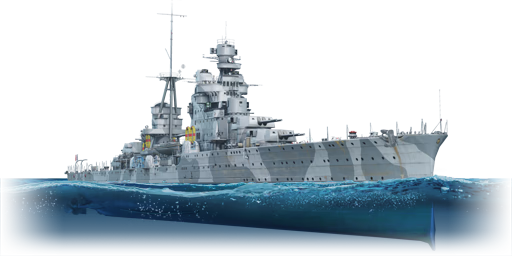The RN Pola was the last heavy cruiser of the Zara class to be built. She was laid down on 17 March 1931, launched on 5 December 1931, completed and commissioned on 21 December 1932, and placed in the 1°Squadra Navale of the 1°Divisione. Between 1936-1937, she participated in operations. On 10 June 1940, the RN Pola was made flagship of 2°Squadra. She participated in the battles of Punta Stilo and Capo Teulada. In 1941, she carried out a raid south of Crete. During her return to Italy, she was attacked by British aircraft and sank on 29th March 1941 at 3:00 a.m., at 35° 15' N, 21° E.
Introduced in Update "Hot Tracks", RN Pola is an excellent ship for researching the Italian bluewater tree. She is the premium version of the RN Zara, but in comparison has a more protected citadel due to the position of the citadel further down in the hull. The main armament is quite good and allows you to destroy enemy ships directly from their hold; however, due to the minimal explosive mass of the AP shells, experience in naval battles will be required to use them effectively against enemy weakpoints. The secondary armament and anti-aircraft are perfect for knocking out small naval targets and aircraft from medium and close ranges. The ship's manoeuvrability and speed allows you to dodge enemy shots and torpedoes, and she also proves to have excellent survivability against enemy cruisers, though you will still have to be careful of enemy battleships because thanks to their large calibre cannons.











 2 x (450 / 600) %
2 x (450 / 600) % 
 2 x 190 %
2 x 190 % 
